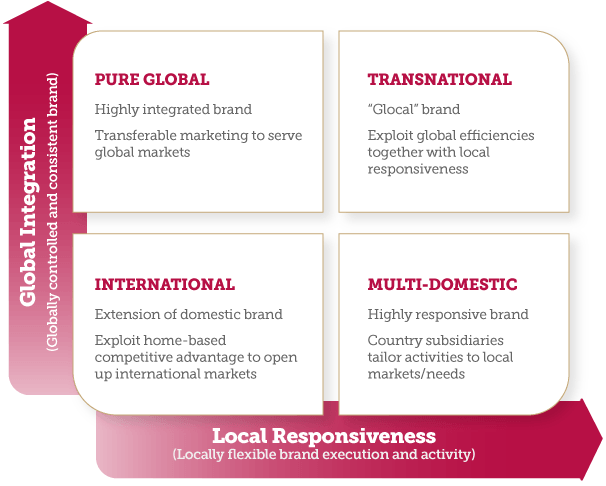Going global and working local: How to balance both
A brand playing in multiple countries has to carefully consider the balance between global consistency and local flexibility as it develops its overall strategy. At first sight, capturing the benefits of both global integration and local responsiveness would appear the obvious strategic choice—think global, act local. The significant costs and complexity of managing such a ‘glocal’ approach through the typical global matrix structure, however, makes practical success difficult. The reality is that many glocal branding attempts tend to be influenced more by global pressures than by true local relevance, or ultimately find that greater local oversight is required, negating some of the benefits of global integration.
The balance between local and global must be thought of as a spectrum that can vary across different parts of the brand’s strategy (from visual identity to communication content to product development/customization). That variance must be carefully tailored both to the product and brand itself, while always keeping a strong and consistent brand message.
Global brand strategy

Selected sources:
